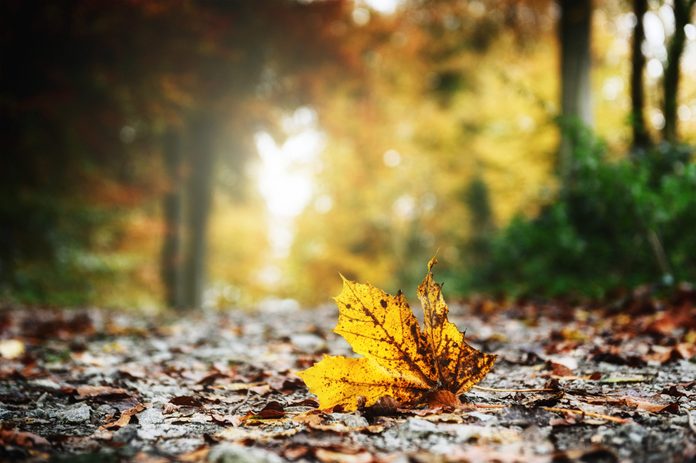
Tough trees
Don’t pass up the chance to add lasting beauty to your yard. Not only will trees bring you joy season after season, the right species planted in the right spot can increase property values and decrease utility costs. Plus, you’ll be planting something for posterity. Take the guesswork out of your landscaping choices and put these tough trees to the test in your backyard. We promise they won’t disappoint you.
Plus, make sure your new tree gets off to a good start with these tree-planting tips.
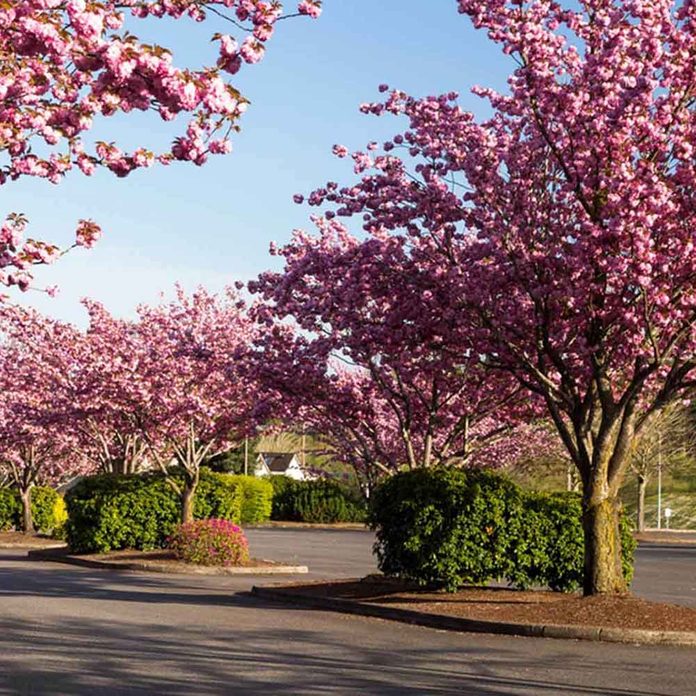
Crabapples
This beauty’s spring blossoms are often so lavish that they hide entire branches. The flowers give way to leaves and then fruit to keep the color show going, sometimes through winter. New varieties provide the famous flowers and resist common ailments, too. Here are different types of flowering trees to spruce up your garden.
Why we love it: Crabapple trees are a four-season plant. They start off the season with colorful blooms and finish in winter with deep-red fruit. May varieties like Jackii have showy leaves in between. Make sure you know these tree pruning techniques to keep your trees healthy.
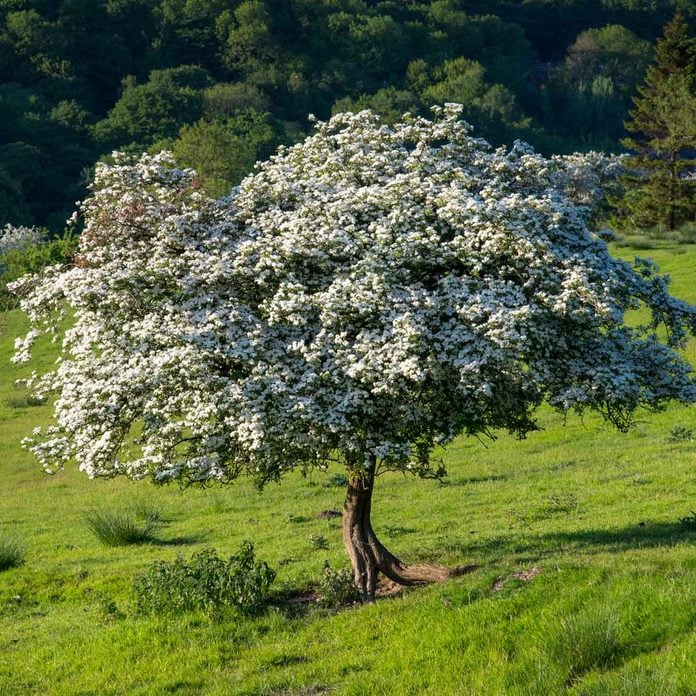
Hawthorns
Providing good cover for many birds, hawthorns also produce scarlet berries that hang on nearly all winter. Thorns up to three inches long are a liability and an asset, so try thornless cockspur, Crataegus crusgalli var. inermis.
Why we love it: Hawthorns tolerate drought, grow in almost any kind of soil and produce fall color. Watching the foliage turn color is one of the greatest joys of fall for a nature lover. Here are 11 trees that will lend outstanding fall foliage color to your yard.
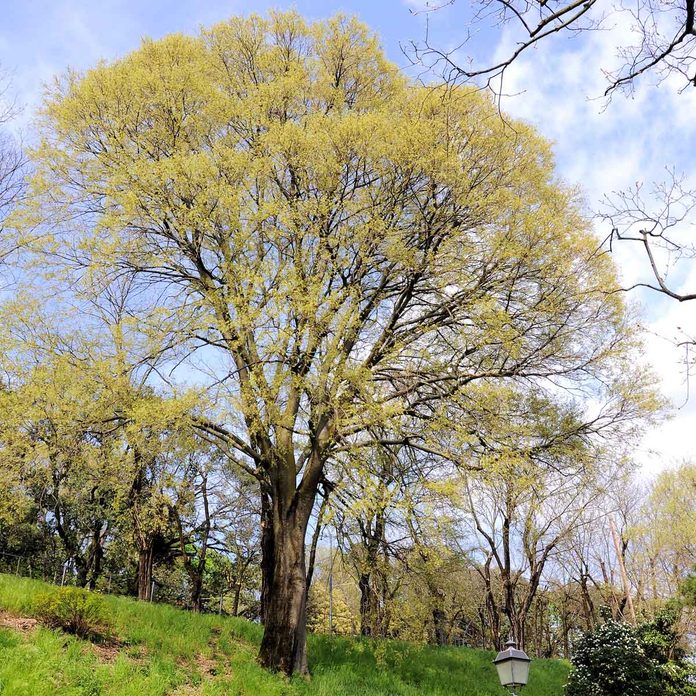
Hackberry
Hackberry grows without complaint in windy areas. It’s not surprising that a native of the Great Plains can withstand windy conditions. The truth is, hackberry can deal with all kinds of conditions. It’s also tolerant of pollution and drought, among other things.
Why we love it: Hackberry is fast growing and offers wildlife potential with its berries. Here are more fast-growing trees to fill out your landscape.
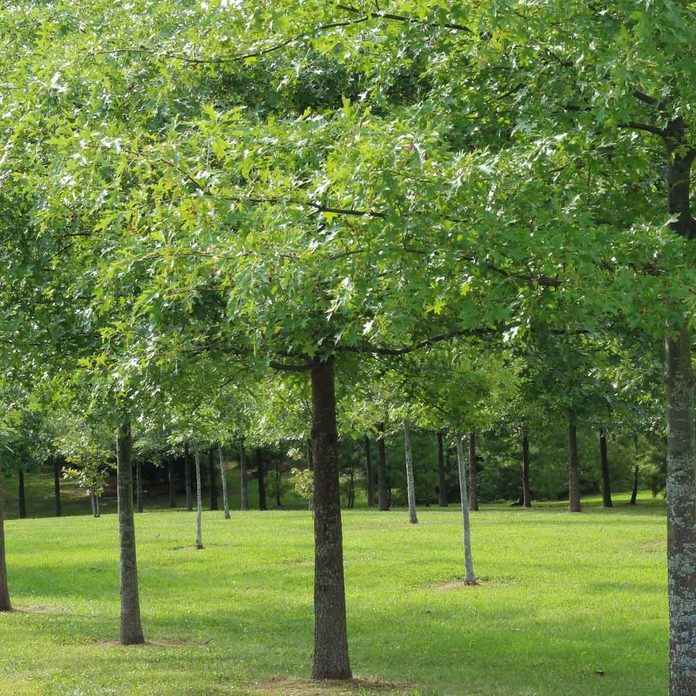
Pin Oak
A fast-growing oak? You bet! The pin oak’s pyramidal shape and fine branches provide a year-round silhouette in the backyard. The glossy green leaves turn russet, bronze or red in the fall. Though tolerant of most growing conditions, acidic soil is a must. Having trouble identifying the type of oak you have? See our guide to identifying tree species.
Why we love it: The pin oak attracts butterflies and hummingbirds, and provides food for the gray hairstreak butterfly and squirrels.
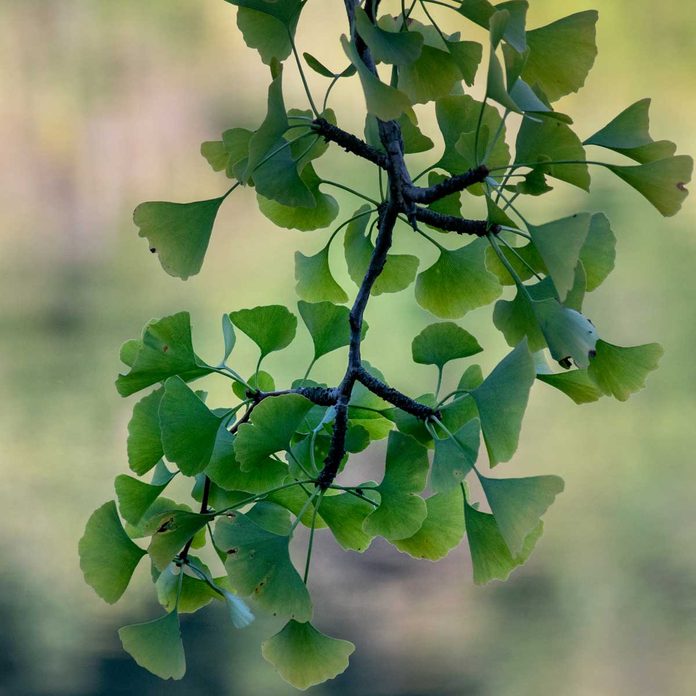
Ginkgo
Ginkgo (Ginkgo biloba) is a great type of tree for your yard — if it’s male. It grows at a slow-to-moderate pace and has pretty architecture, beautiful fall foliage, and lineage dating to the time of the dinosaurs. Avoid planting a female ginkgo in your yard, though, because it will drop messy fruit in fall that smells a bit like vomit when it starts to rot. Here are 15 trees you DON’T want to plant in the home landscape.
Why we love it: Their fan-shape leaves are unique and pop in fall when they turn bright yellow.
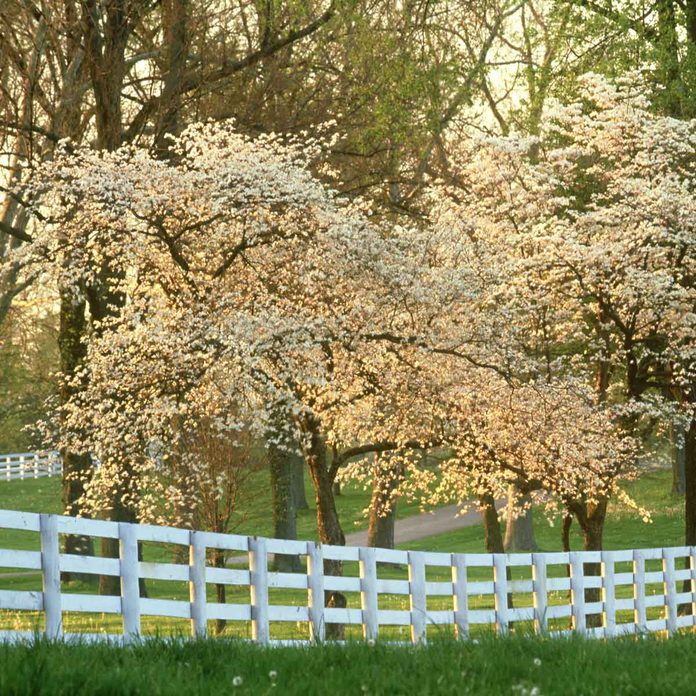
Dogwood
Dogwood is a genus with multiple species around the globe. Possibly the most famous and cultivated is flowering dogwood native to eastern North America. Pacific dogwood is native to the western parts of the country. Flowering dogwood is a fairly small ornamental tree, growing to about 30 feet, while Pacific dogwood can grow to more than 60 feet. Both flower profusely in the spring with lovely white flowers.
Why we love it: Birds are drawn to the berries in the fall.
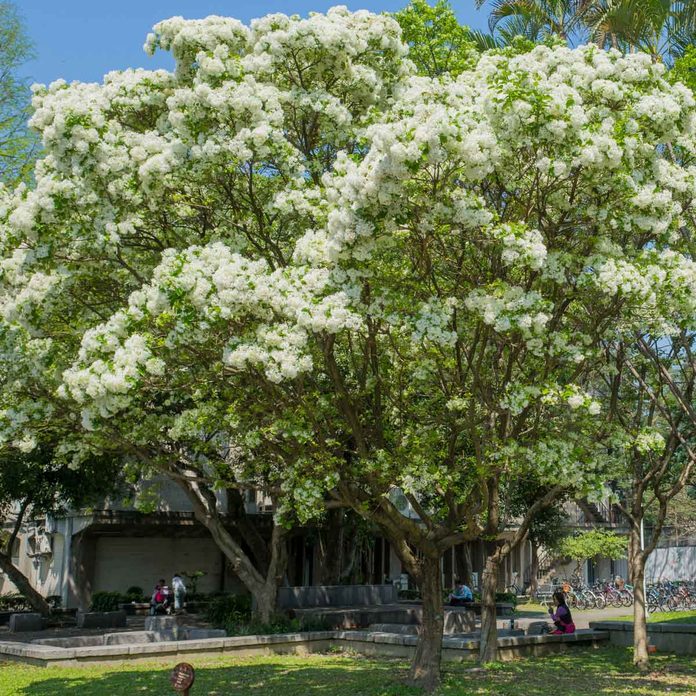
Fringe Tree
Native from southern Pennsylvania to Florida and to Texas, fringe tree bursts onto the spring scene with lightly fragrant strappy white petals. They’re held in small groups attached at the top like tassels.
Why we love it: It’s the best-kept secret among spring-blooming trees, yet it’s one of the most adaptable, thriving in full sun to part shade. Female trees produce blue fruits that birds love.
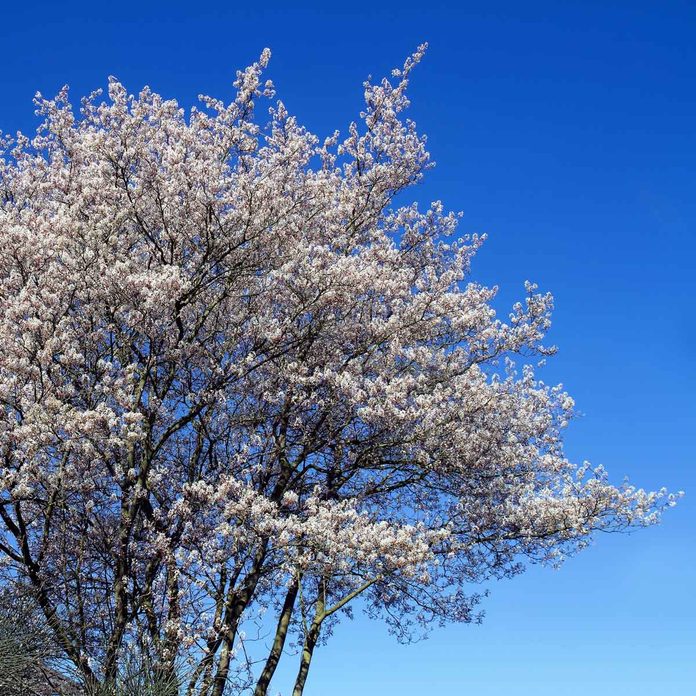
Serviceberry
Hard-working and airy, serviceberries grow as trees or multi-stemmed shrubs. Plant a species that is suited to your region to attract birds and other wildlife. The blooms, foliage and bark stand out when grown against a dark background, like the one evergreens provide. If you love berries, then you’ve got to try honeyberries.
Why we love it: Four-season interest! From spring blooms to summer fruits to fall color to beautiful winter bark, serviceberry shines.
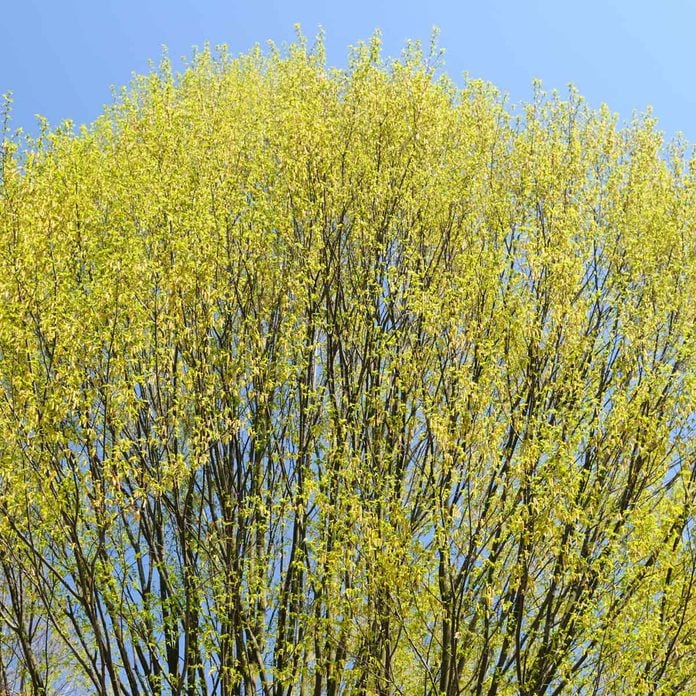
Musclewood or Hornbeam
This is the first year firespire musclewood is widely available to consumers. Celebrated for its upright form and stunning fall color, this tree has so far been pest- and disease-free. Here’s how to deal with 10 of the most common tree diseases.
Why we love it: It’s sun- and shade-tolerant so it will work well in any area of your yard, whether as a large hedge, a screen plant or a specimen plant in a smaller space.
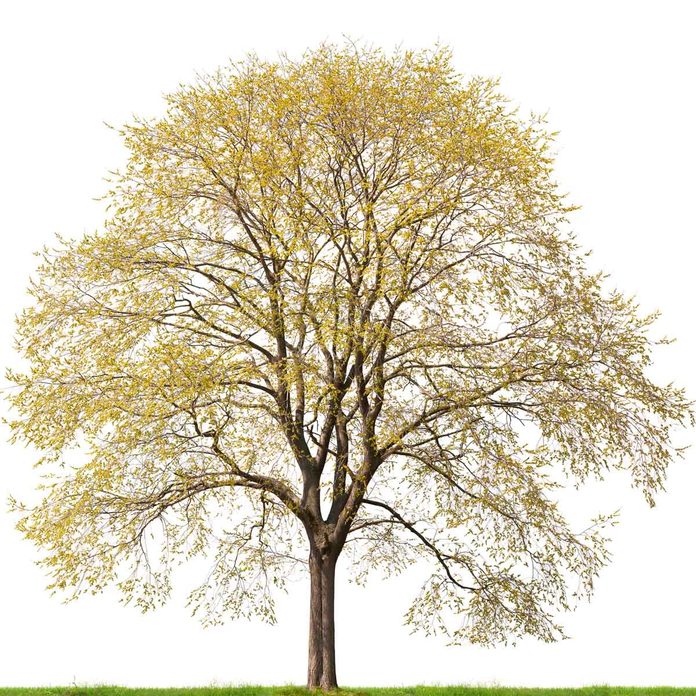
Ironwood or Hop Hornbeam
Ironwood is a tough understory tree with beautiful birch-like leaves, grayish-brown flaky bark, fine-textured drooping branches and attractive hop-like fruits. Ironwood is considered a tough native hardwood and is not only ornamental but resistant to many disease and insect problems. Excellent tree for naturalized landscapes. Caring for your trees will help them grow quickly and fill out your yard.
Why we love it: Ironwood is shade tolerant and an excellent small, urban shade garden species.
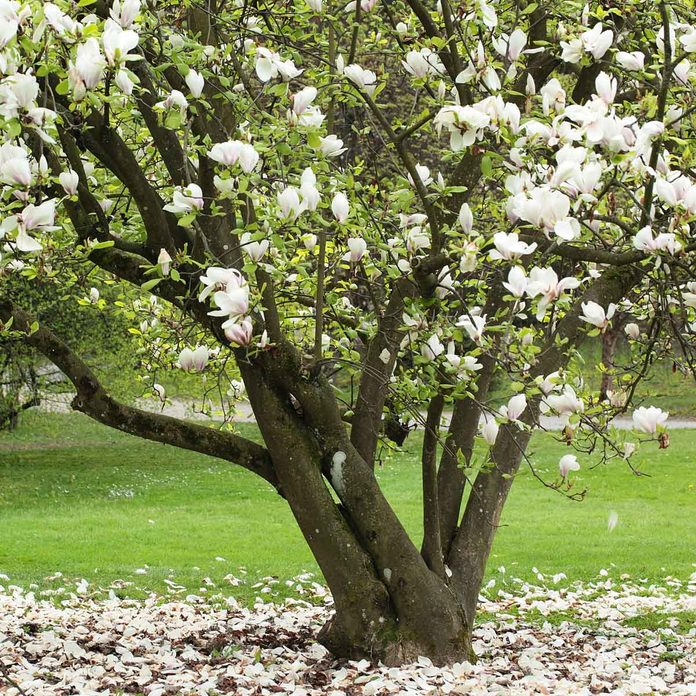
Sweet Bay Magnolia
Lemon-scented flowers, dark green leaves and its evergreen nature in southern gardens make this a good patio or specimen plant. Watch as the wind rustles the leaves exposing their silvery undersides. Provide proper care for faster growth.
Why we love it: It’s more tolerant of shade and wet areas than other magnolias.
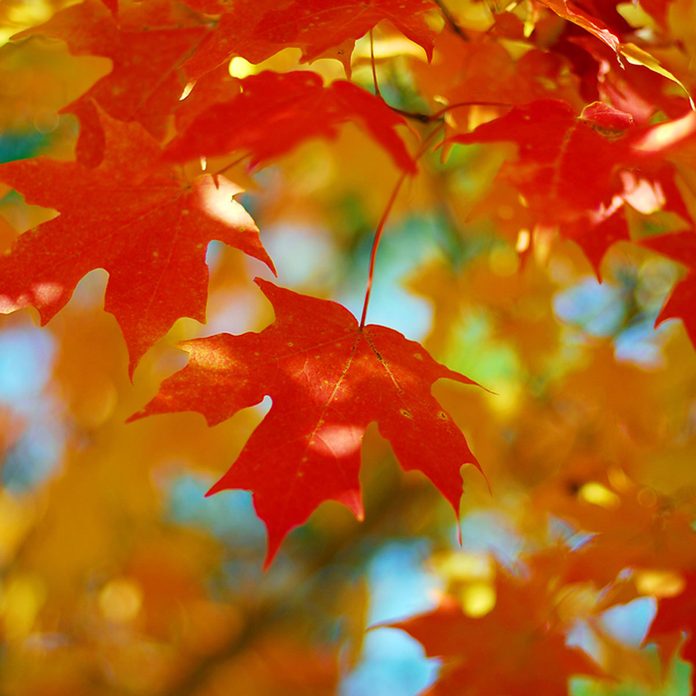
Red Maple
This native tree’s red flower buds and blooms add subtle color to the early spring landscape. They finish off the season when the green leaves turn a brilliant red in fall. Select a cultivar with good branch structure and reliable fall color such as red sunset or northwoods. Here’s how to plant a maple tree.
Why we love it: Acidic soil is a must, but the hybrid Freeman maple (red maple crossed with silver) has the red maple’s fall color and the silver maple’s alkaline soil tolerance.
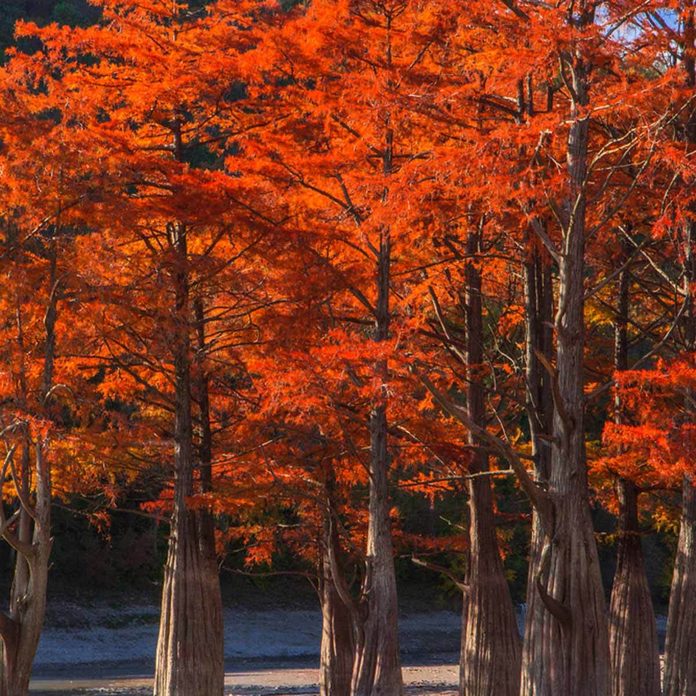
Bald Cypress
You’re likely to find this large, deciduous tree in the swamps of the eastern half of the U.S. (It’s also the state tree of Louisiana.) It needs full sun and acidic soil to thrive, growing best in moist, deep soil with good drainage. Slow-growing species include Cascade Falls, which is a weeping form. Also, Secrest is a nice flat-topped cultivar. These trees are great for privacy. Meet some other plants that have the same knack.
Why we love it: This tough conifer is tolerant of wet and poorly drained sites. It also has beautiful orange to pumpkin-brown fall color before the needles drop.
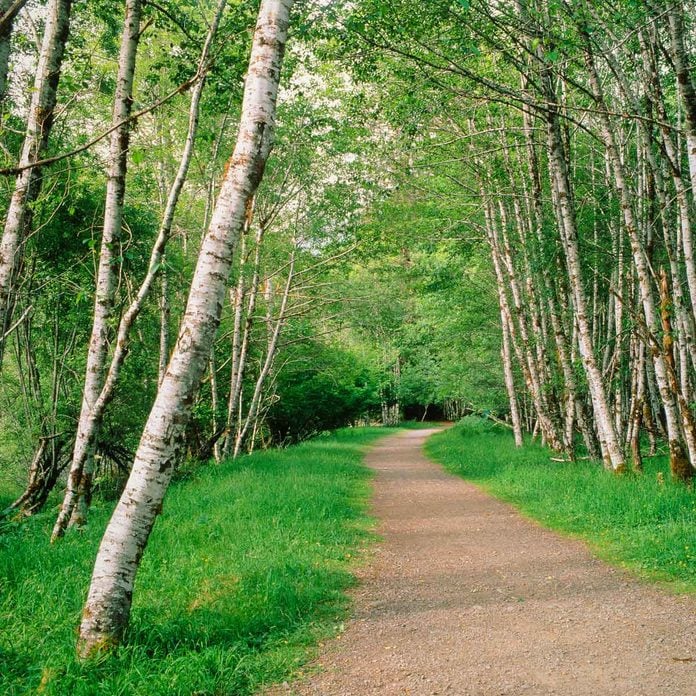
Native Alders
Alders like moist surroundings. Their peculiar woody cones (called strobiles) that look similar to a flat tail of a beaver make these tree easily identifiable. They hang from the tree throughout winter like miniature lanterns. Alder leaves are shed while still green. There are eight species of alder native to North America. Check out these 10 clever tips for landscaping around trees.
Why we love it: Alders add nitrogen to the soil in the manner of legumes, and decomposing alder leaves improve soil structure.

Swamp White Oak
Swamp white oak is a striking tree with peeling bark, especially prevalent on young trees. Their lobed leaves have a two-tone appearance, dark green on top with a silvery-white underside. The swamp white oaks fall foliage color is an orange-gold to yellow in mid-autumn. An excellent shade tree for any landscape. Here’s how to make your shade trees thrive.
Why we love it: The swamp white oak is one of the easiest oaks to transplant and more tolerant of poor drainage than other oaks.